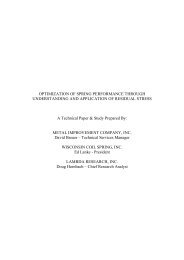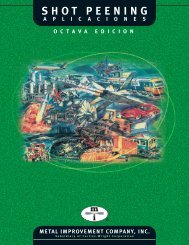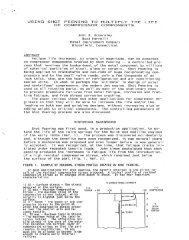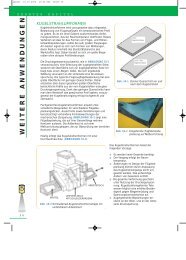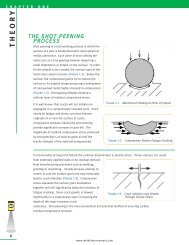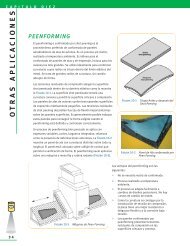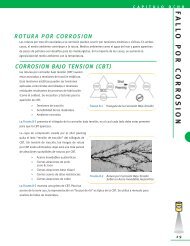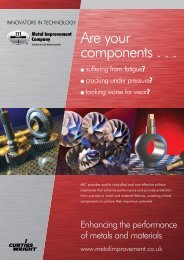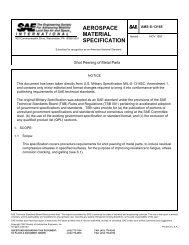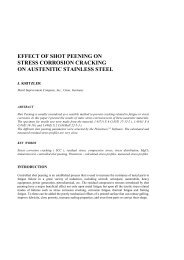MIC Green Book
MIC Green Book
MIC Green Book
You also want an ePaper? Increase the reach of your titles
YUMPU automatically turns print PDFs into web optimized ePapers that Google loves.
C H A P T E R T H R E E<br />
M ANUFACTURING PROCESSES<br />
18<br />
ELECTRO-CHE<strong>MIC</strong>AL MACHINING (ECM)<br />
Electro-chemical machining is the controlled dissolution of material by contact with a strong chemical<br />
reagent in the presence of an electric current. A reduction in fatigue properties is attributed to surface<br />
softening (the rebinder effect) and surface imperfections left by preferential attack on grain boundaries.<br />
A shot peening post treatment more than restores fatigue properties as shown in Figure 3-5 [Ref 3.12].<br />
Application Case Study<br />
DIAPHRAGM COUPLINGS<br />
Metal diaphragm couplings are often used in turbomachinery applications. These couplings accommodate<br />
system misalignment through flexing. This flexing, or cyclic loading, poses concerns for fatigue failures.<br />
Researchers concluded that the ECM process produces parts that are geometrically near-perfect. However,<br />
they found under scanning electron microscope observation that small cavities sometimes developed on<br />
the surface as a result of ECM. These cavities apparently generated stress concentrations that lead to<br />
premature failures. Shot peening after ECM was able to overcome this deficiency and has significantly<br />
improved the endurance limit of the diaphragm couplings [Ref 3.13 and 3.14].<br />
REFERENCES:<br />
3.1 Internal Metal Improvement Company Memo<br />
3.2 Molzen, Hornbach; Evaluation of Welding Residual Stress Levels Through Shot Peening and Heat Treating, AWS Basic Cracking<br />
Conference; Milwaukee, WI; July 2000<br />
3.3 Haagensen; Prediction of the Improvement in Fatigue Life of Welded Joints Due to Grinding, TIG Dressing, Weld Shape Control and Shot<br />
peening." The Norwegian Institute of Technology, Trondheim, Norway<br />
3.4 McCulloch; American Society of Mechanical Engineers, Letter to H. Kolin, May 1975<br />
3.5 Stern; American Bureau of Shipping, Letter to G. Nachman, July 1983<br />
3.6 Ubben; American Petroleum Institute, Letter to G. Nachman, February 1967<br />
3.7 N.A.C.E Standard MR-01-75, Sulfide Stress Cracking Resistant Metallic Material for Oilfield Equipment, National Association of Corrosion Engineers<br />
3.8 Internal Metal Improvement Company Memo<br />
3.9 Molzen, Hornbach; Evaluation of Welding Residual Stress Levels Through Shot Peening and Heat Treating, AWS Basic Cracking Conference;<br />
Milwaukee, WI; July 2000<br />
3.10 Metallurgical Associates, Inc; "Minutes" Vol.5 No.1, Winter 1999; Milwaukee, WI<br />
3.11 Internal Metal Improvement Company Memo<br />
3.12 Koster, W.P., Observation on Surface Residual Stress vs. Fatigue Strength, Metcut Research Associates, Inc., Cincinnati, Ohio.<br />
Bulletin 677-1, June 1977<br />
3.13 Calistrat; Metal Diaphragm Coupling Performance, Hydrocarbon Processing, March 1977<br />
3.14 Calistrat; Metal Diaphragm Coupling Performance, 5th Turbomachinery Symposium, Texas A&M University, October 1976<br />
www.metalimprovement.com



